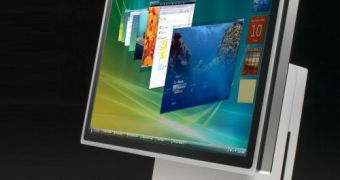Microsoft Research is hard at work on a new project designed to virtually redefine the concept of portability. In a variety of ways, the Windows operating system can already go virtually anywhere with its users, but this does not mean that the evolution has stopped at the laptop or Ultra Mobile PC level. According to Mary Jo Foley, Microsoft is now hard at work on putting Windows on USB-based flash drives via StartKey. A clue to what the Redmond company is cooking with StartKey is the current U3 technology which essentially permits users of USB drives to not only store files, but also to install and run applications from the USB stick. Another clue is the Keychain project from Microsoft Research.
"Tomorrow's mobile computing environment might see a proliferation of public-use (kiosk) machines where users can simply and easily call up their desktop environments. This vision offers an alternative to portable computing that doesn't require users to carry bulky, fragile, and theft-prone laptops. We posit that kiosk machines are capable of hosting users' desktops as virtual machines and propose a virtual disk design. The virtual disk design allows for an efficient access to per-user state held 'in the network.' We use flash-based disks to capture virtual machine memory state and to act as a cache for the virtual disk. We also allow static portions of the virtual disk, e.g., binaries for Windows and Office, to be served from the kiosk disk," reads the overview of Keychain.
Essentially, StartKey seems to be one and the same with Keychain. In Microsoft's perspective, StartKey will enable the end users to take their home desktops away with them on USB Drives, and access their personalized and customized copy of the operating system anywhere from public kiosks to a friend's computer. Judging by the Keychain project, virtualization technology will play a big part of the USB portable Windows equation. According to Microsoft, the new technology will allow to access your copy of Windows in Virtual PC, resume from standby, perform whatever work you want to do and then save everything to the flash drive.

 14 DAY TRIAL //
14 DAY TRIAL //